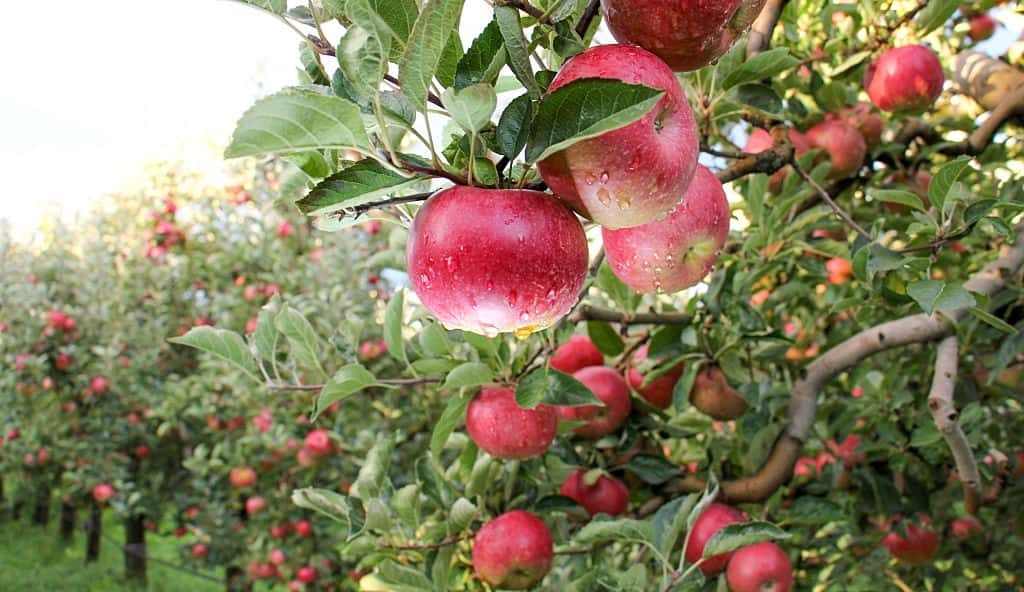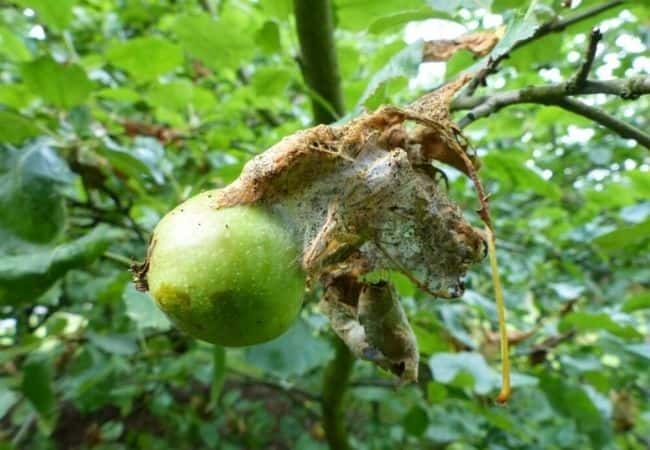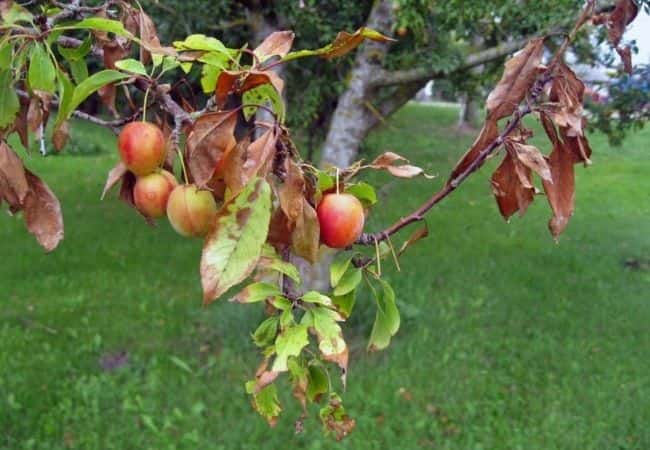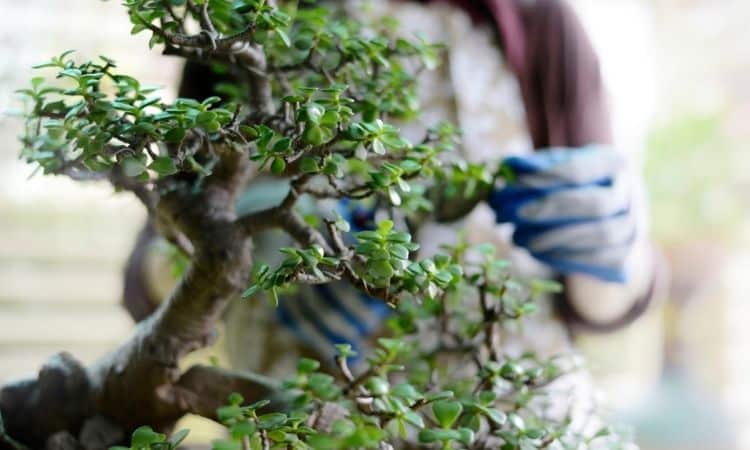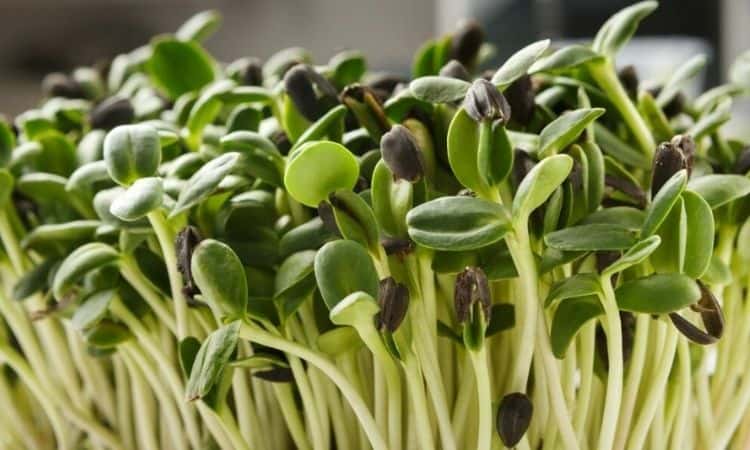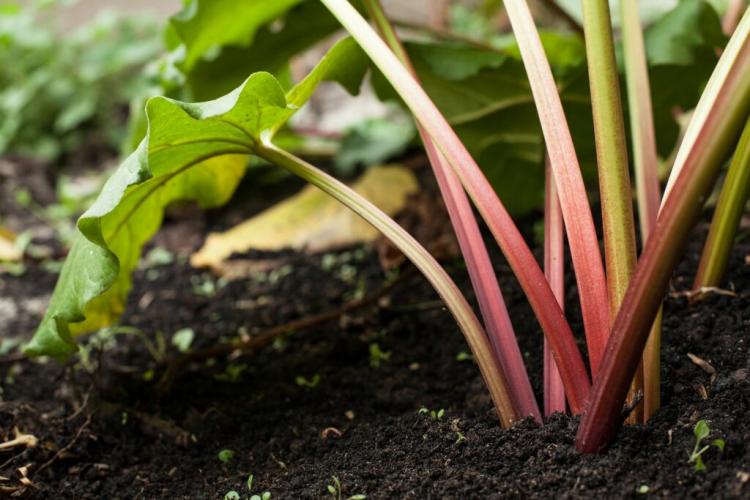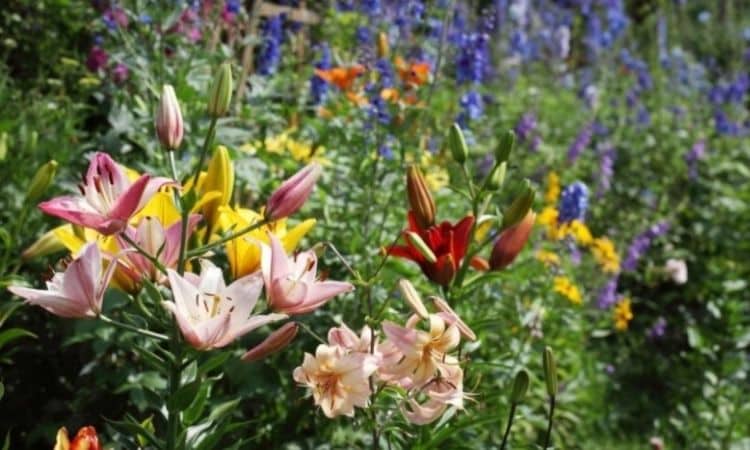Apple Tree: How To Grow And Care For An Fruit Tree
Apples are among the most popular types of fruit worldwide – ideal if they grow in your own garden. We give important tips about the apple tree. Apples (Malus) are a fruit tree species of immense importance. There is no fruit with a greater variety.
Every spring the apple trees can be recognized by their white to pink flowers before they deliver the popular fruits in autumn. In the ideal case, one can harvest fresh apples from one’s own garden. Gardender summarizes for you what you absolutely must know about the apple.
Apple Tree: A short Profile
Table of Contents
The widespread cultivated apple (Malus Domestica) belongs to the rose family (rosacea). Due to its popularity, which results from its diversity, good storage properties, and versatile uses, apples are among the most economically important fruit species.
However, apple trees are not only cultivated for their fruit. Some species also serve only as ornamental plants, they do not bear tasty fruit, but are an eye-catcher in the garden because of their beautiful flowers and the much smaller but still very ornamental fruits.
The blossoms of the apple tree are white or slightly pink and fragrant. The apple tree blooms in our garden from the end of April. From the flower axis – a connection between the stalk and the actual flower organs – the apples develop as fruits.
After fertilization by pollen, the fruit leaves grow together and the fruits are formed. The fruit leaves are then only recognizable in the fruit as a core housing in which the apple seeds are located. For the trees to bear fruit, they need more than 900 hours a year below 7 °C. This internal clock is intended to minimize the risk of the apple tree being hit by late frost damage in spring.
Once the threshold of this time is reached, the apple tree has the full capacity to go into flower as temperatures rise. This mechanism is called vernalization. In large parts of the world, these requirements for the climate are met, hence the wide distribution and popularity. The leaves of the tree are oval, round, or elliptical and have a serrated edge.
The trees can bear fruit for up to 50 years. However, it can take up to seven years until the first harvest. Also, the apple tree needs a pollinator variety, if there is no other apple variety nearby, the tree will not bear apples.
There are apple trees as high trunk, half trunk, and column. The different variations and growth forms are many and varied and are suitable for orchard meadows, the home garden, or allotment garden.
You Might Also Like Are Apples Considered Fruits?
Apple Tree Blossom: When Is Flowering Time?
The apple tree blossoms at the end of April. Since the trees blossom at the beginning of spring, when the leaves are just beginning to emerge, they can be seen well into May. This means that the apple blossom falls at a critical time when the entire harvest can be ruined. Even in spring until mid-May, severe late frosts can still occur. If the apple trees are caught unprotected in their blossom, in the worst case, they can freeze completely.
Fruit growers try to avert a crop failure due to frost damage with various methods on cold nights when the apples are in blossom: For example, they water their plantations, because when the water freezes directly at the blossom, energy is released in the form of heat (so-called anti-freeze irrigation), or they light controlled campfires that give their trees a pleasant warmth.
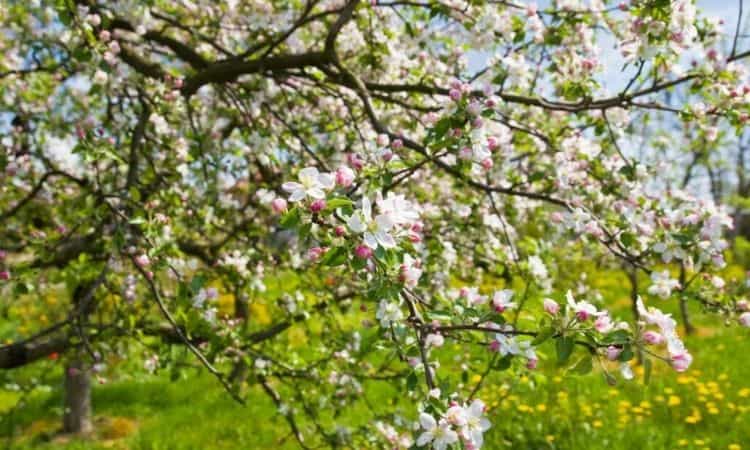
Due to their popularity and the resulting wide distribution in many gardens and meadows, apple trees are also an important factor for beekeepers. Their bees can feed on the nectar of the flowers in spring. Thus they also contribute to the pollination of the blossoms.
Apple Varieties: Ripening Time And Taste
When choosing the right apple variety for your garden, take into account your own needs and wishes regarding the fruit. Many varieties available on the market require a lot of care and are not very suitable for private cultivation. However, some more robust varieties come relatively close to them in terms of taste.
When choosing a suitable apple variety, there are several things you must consider:
- How resistant is the variety to certain pathogens and/or pests?
- How much care does the variety require?
- Which growth form is suitable for the location? Is there room for a projecting high stem or just a columnar shape?
- What taste should the apple have – sugar sweet or sour?
- When should it be harvested and should the apple be storable? A distinction is made between ripe for consumption and picking, as well as early and late ripe varieties. Apples are ripe for picking only develop their taste after they have been stored for a few weeks, while varieties ripe for consumption can be eaten directly from the tree.
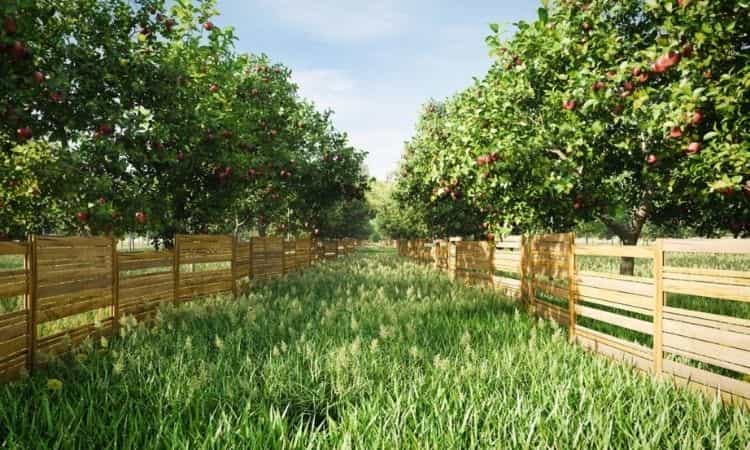
Early varieties
Early apple varieties reach their final stage for consumption as early as August. Most of the early ripe apple varieties are directly ripe for consumption and less suitable for storage.
- Discovery: Small to medium-sized fruits with a pleasant acidity
- Nela: Scab resistant variety with bright red, medium sized-fruit; fine acidic aroma, similar to ‘Gala
- Gravenstein: Big apples with an aromatic taste
- Retina: Resistant variety with sweet-sour aroma (scab resistant)
- Elstar: Medium-sized yellow-red fruits with an intense spicy aroma
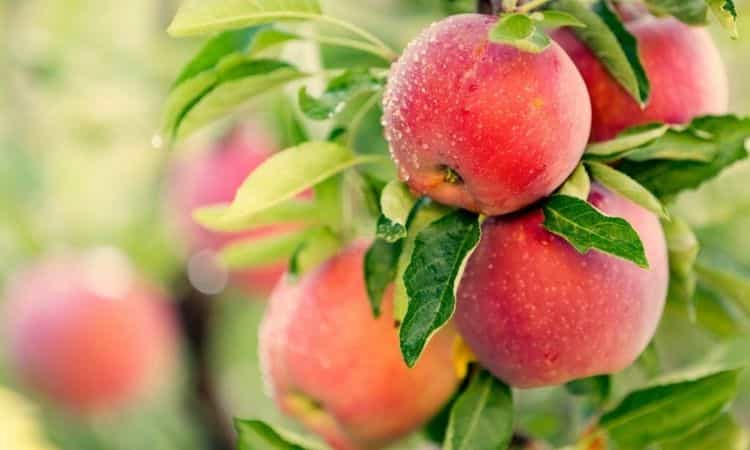
Autumn varieties
While early varieties are ripe already in August, autumn varieties reach this stage only in September to October. However, most autumn varieties are ready for consumption immediately and can be stored until Christmas.
- Rote Alkmene: Small to medium-sized fruits; sweet fruity and aromatic, similar to Cox Orange.
- Santana: Scab resistant; particularly robust variety with a sweet taste, similar to Elstar.
red star-Frenette’: small, flat-round fruits with a strong red skin; sweet-sour taste. - Golden Parmene: small to medium sized-fruit; the sweet aroma.
- Gerlinde: small fruits with a sweet, finely sour taste.
- Rebella: frost hardy; resistant to apple scab, mildew, fire blight.
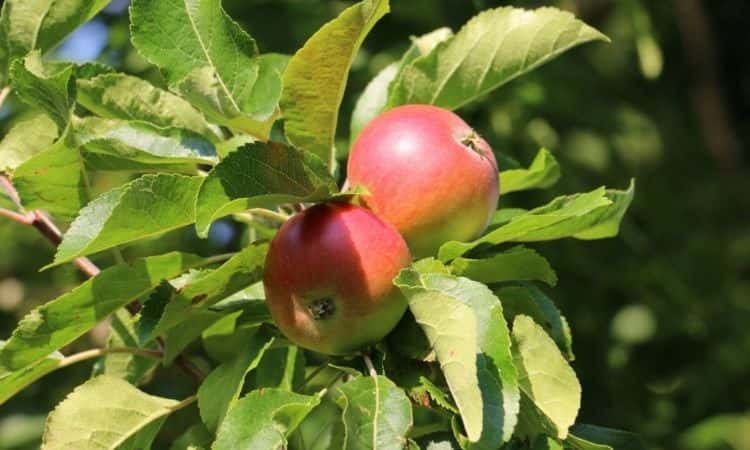
Winter apples
All apple varieties that ripen after October belong to the winter apple family. Due to the danger of frost damage, they should be harvested when ready for picking, which means that they should be stored for a few weeks until they can be enjoyed. However, most winter apples can be stored comparatively well for this.
- Red Berlepsch: Small to medium-sized fruits with a fine fruity aroma, similar to Braeburn, Fuji.
- Red Boskoop: medium to large fruits with a tart, tart aroma.
- Topaz: Scab resistant; medium sized-fruit with balanced acidity, similar to Pink Lady.
- Winter Banana: Medium-sized, flat-round fruit; particularly sweet and aromatic, similar to Jonagold.
- Rewena: Medium-sized, highly developed fruits with a tart and sour aroma (resistant to apple scab, mildew, fire blight).
- Florina: Small to medium-sized, dark red colored fruit with a slightly sweet aroma (scab resistant).
- Golden Delicious: Medium-sized, yellow fruits; very sweet and juicy.
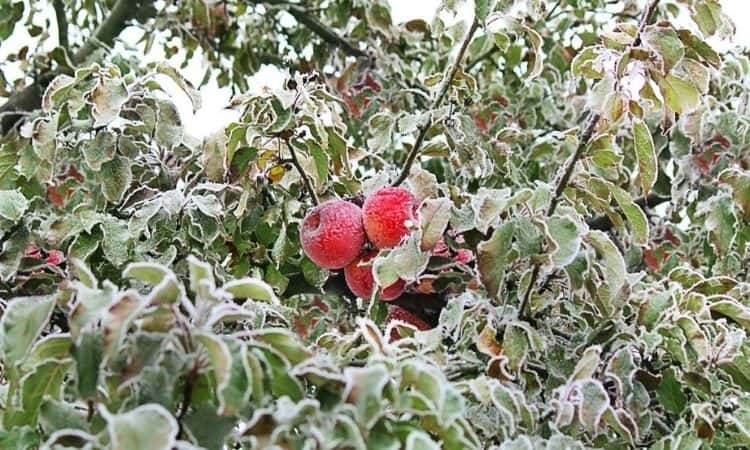
Traditional Apple Varieties
The apple is one of the oldest cultivars of all. Some of the old varieties have proven themselves and are still very popular today. They are rich in vitamin C and often resistant to rust and mildew. With the old varieties, you should choose regional varieties. They are unsurpassable in taste. Among the old varieties are:
- Boskoop: Winter apple, which is also very suitable as a baked apple due to its cinnamony-fresh aroma
- Roter Gravensteiner: 17th-century autumn apple with intense sweet-sour aroma; the disadvantage is its sensitivity to pressure
- Goldparmäne: More than 500 years old variety with red-golden yellow fruits; nutty taste, but susceptible to the dreaded fire blight
- Kaiser Wilhelm: Named after the last German emperor; large fruity winter apple variety, which is well suited for juice production from the orchard meadow due to its juicy fruit flesh
Apple Tree As The High Trunk
The grafting takes place at a height of about 1.8 m, the base then forms the trunk. The comparatively high stem height of about 1.8 m requires more effort when picking the apples. For the crown to unfold, tall stems require more space. High trunks are therefore less popular in private gardens. However, they also have some advantages: the large crown and thus the higher yield compared to other growth forms speak in favor of the high trunk.
The taller crown is particularly suitable for cultivation in cultivated meadows and fields. However, the exposed position of the crown makes it difficult to harvest the apples. If it is not possible to pick the apples from the tree with a ladder, you can simply shake them off. The fallen fruit is then less suitable for storage, but all the better for juice and must extraction.
Apple Tree As Half Trunk
The half trunk is popular for the house and allotment garden. The grafting point for half logs is significantly lower than for high logs. A half-stem is grafted at a height of only about 0.8 to 1.2 m. This makes harvesting the apples much easier compared to the high trunk. The smaller remaining half-stem also forms a lush crown and can reach a height of 4 to 6 m. maximum. Therefore, the half-stem should also be allowed a sufficient distance of about 6 to 7 m. all around.
You might so like: Red Love Apple: Varieties, Taste And Cultivation
Appletree In Column Form
The columnar form of the apple tree is the smallest growth form. The columnar form is a weak growing tree without a defined trunk. They can also be planted next to each other with a small distance of about 0.5 m. They can be planted in rows, for example, to obtain a privacy screen that also produces delicious fruit. This growth form is also suitable for the balcony or terrace, all you need is a suitable tub. To maintain the column shape, regular pruning care is required.
Apple Tree As A Trellis
Half trunks are best suited for the formation of trellises. It is also possible to raise high trunks to an espalier, but these will of course become high and need more space. Also, the training measures necessary to raise an espalier quickly become tedious at the height of the high trunk. An apple trellis must be brought into shape and held in place by regularly targeted cutting. Individual branches have to be cut and tied into a horizontal form – to train an apple tree as a trellis is something for real professionals.
Propagate And Cuttings
Grafting is not the only way to propagate an apple tree. Of course, you can also multiply them, for example, by using cuttings and sinkers – in many cases, even true to type.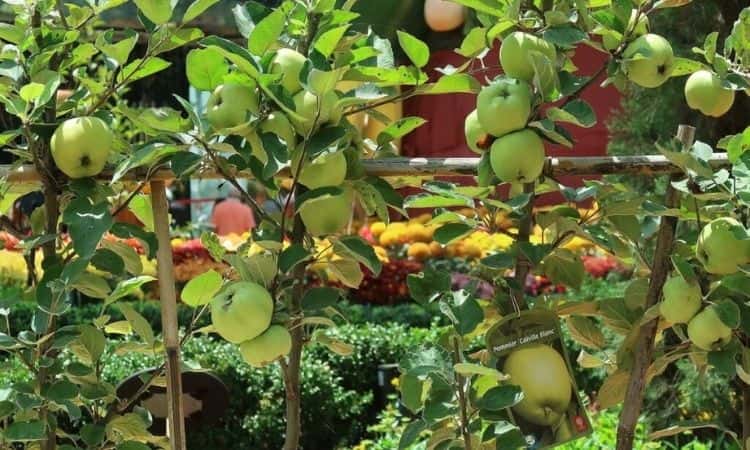
Sowing an apple tree: variety is not preserved
To sow an apple tree, you can simply use the core of an apple. But you need a lot of patience until the first harvest. This will only happen many years later. You should be aware that you cannot be sure which variety is involved. Apple trees always need a pollinator variety because they are self-sterile. This means that the genetic information of the pollinator variety will always be passed on to the next generation of apples, which you grow from your own seeds.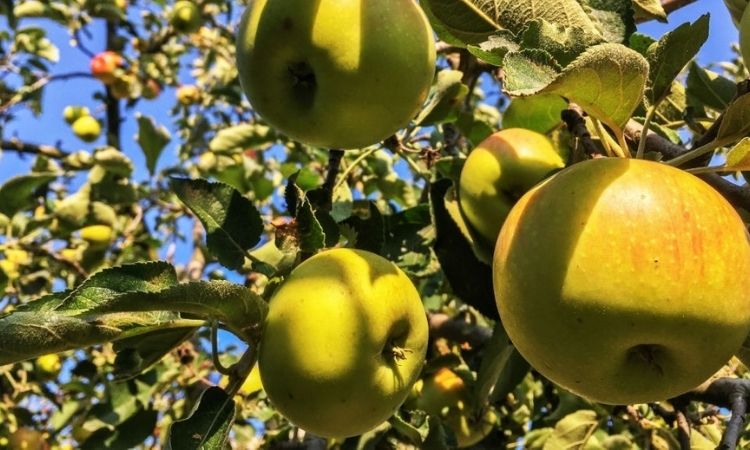
Propagating an apple tree vegetatively
When propagating apple trees, one distinguishes between generative and vegetative propagation: generative propagation includes sowing. Vegetative propagation produces a genetic copy of the mother plant with the same characteristics. There are different methods of vegetative propagation:
- Multiply apple tree by cuttings
- Most important vegetative propagation method
- cuttings from young, green shoots
- After new shoots, when the shoots are still fresh and as unwooded as possible
- Possible, but no economic significance
- Multiply apple tree by a sinker
- Cover the shoots near the ground with soil in one place
- There a new root is formed
- The genetically identical plant is created
- Optimal with a half trunk, because of the ground proximity
- Possible, but no economic significance
Grafting An Apple Tree: Instructions For Grafting
For the varietal propagation of an apple tree, the tree is grafted. It is the simplest form and produces yields much faster than the other forms of propagation. There are different methods of grafting. However, they all have in common that the special characteristics of a certain variety – the noble variety – should be preserved.
In the case of the apple, this would not be possible using seed propagation due to cross-pollination. In grafting, small parts, such as individual buds or parts of shoots, are usually simply taken from the noble variety and connected to an already further developed plant – the so-called rootstock.
Basically, four different grafting techniques are used for the apple tree. These differ in the time at which they are carried out: Some are carried out during the dormant period in winter, others in summer.
Grafting In The Resting Phase: Winter Grafting
The scions of the variety to be propagated are harvested in December or January. Winter grafting can be done even then under frosty temperatures, but a heated or at least frost-free greenhouse should be available. Alternatively, the scions can be stored first.
However, the grafting should be carried out at the latest at the end of March to the beginning of April, so that the scions and rootstock can grow together to some extent before the large budding out. In general, the earlier the grafting is done after cutting, the better.
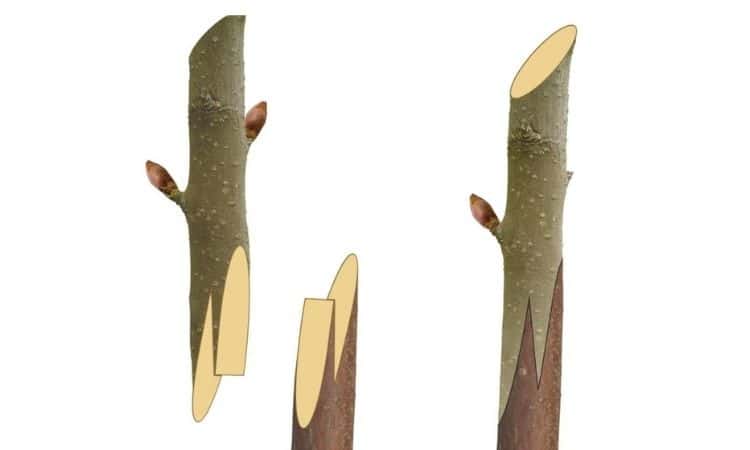
- Copulation.
- Graft and rootstock are equally thick in diameter.
- Copulation cut: Oblique cut on graft and padding. Caution: Underlay and graft should fit together perfectly after the cut. Make sure that the graft is cut from the correct side.
- Join together: Both parts are placed on top of each other and fixed with bast. The cut is covered with wax or tree wound closure.
- Goutweed method.
- The carpet pad is about twice as thick in diameter as the graft.
- Cut: Two diagonal cuts from top to bottom, so that a 3 – 4 cm long wedge (goat’s foot) is cut out. Form the graft rice with two diagonal cuts to form a corresponding counter wedge.
- Join together: There should be as little space as possible between the graft and the base; fix the joint with bast and coat with wax or tree wound closure.
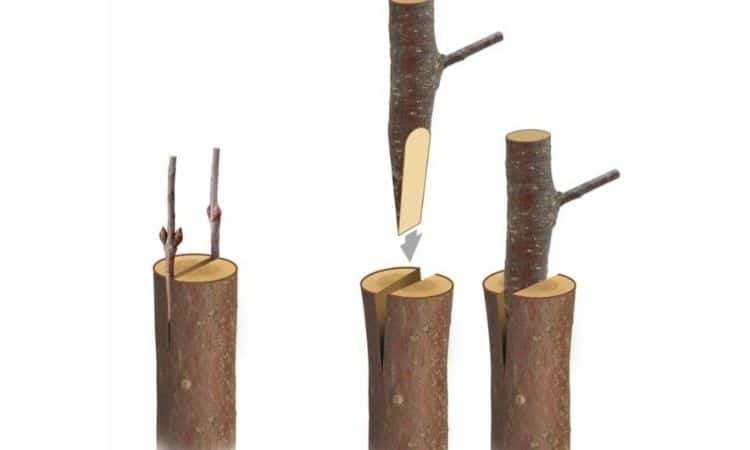
- Plug
- The carpet pad is much stronger in diameter than the graft
- Split plugs: a vertical slit is cut centrally in the base, the graft is sharpened so that it fits into the slot in the base.
- Join together: Much thinner grafting rice is inserted into the grafting slit of the carpet pad, bound with bast and coated with wax or tree miracle closure.
- Grafting in the growth phase: Summer grafting
- The summer verdellings are much more filigree: To bring the gem onto the base and thus propagate it, the bark of the base must come loose and the counterpart of the gem is sensitively pushed under the bark. However, since the bark only loosens particularly well in July and August, summer is the time for these graftings.

- Oculation
- Precious eye instead of grafting rice: The precious eye – a single vegetation bud – is extracted from the grafting rice. It is best to use a special ocular knife for this purpose.
- T-cut in the grafting base: Clean the area beforehand with a cloth, then cut once crosswise and then vertically downwards underneath it so that the bark comes off. Remove the woody parts so that the cambium is exposed.
- Inserting the eye: It is best to hold the eye with the back of the knife to avoid soiling it. Lift the bark under the T-cut carefully with a knife and insert the eye.
- The eye should be in the middle. Fix the spot with bast – but the eye must remain free.
- Bark stopper
- The special shape of the plug.
- Well suited to combine very thin grafting rice with a very thick base.
- Cut the base down to the desired thickness and loosen the bark at one point by cutting vertically downwards. Then lift the bark carefully, but not completely open.
- Cut the graft rice in the corresponding length of the cut on the base flat lengthwise. Push the cut graft behind the bark and fix the connection point with bast.
Apple Tree Fertilization: How To Set Fruit
Apple varieties are self-sterile. You need a second apple variety for fertilization. The so-called pollinator variety. Some varieties have very specific requirements. A suitable pollinator must be placed near the apple tree so that it can attach fruit. Usually, it is sufficient if the pollinator variety is located in the neighboring garden.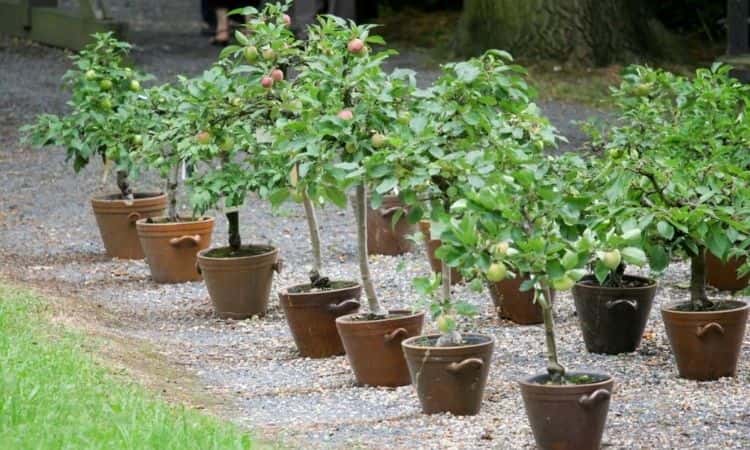
Buy an apple tree: What to look for when buying
Before you buy an apple tree, you should already think about it. Keep in mind that an apple tree usually takes up a lot of space or reach for weakly growing specimens – please refer to the grafting instructions. Choose a variety that suits your taste.
When buying an apple tree, remember that it needs a pollinator. Before buying, you should take a thorough look at the selected plant. The product should:
- A straight stem.
- Well-branched crown with at least three long side branches.
- No injuries to the bark.
- No disease symptoms.
- No dead shoot tips.
- And show intact grafting points.
Plant An Apple Tree: Procedure In 7 Steps
The better the soil, the better the tree grows. The best way to plant the trees is as follows:
- Put the root ball in water for a few hours before planting.
- Dig the planting hole: with a spade about 0.5 meters deep and double the width of the root ball.
- Loosen the bottom of the planting hole and cover it with a layer of compost; root growth is inhibited if the ground is too dense.
- Place the apple tree vertically in the planting hole; the grafting point must be at least 10 cm above the ground.
- Fill planting hole: The excavated soil mixed with compost is suitable for this. Cavities should be avoided.
- Press down soil and make a watering rim: However, you should not compact the soil too much.
- Water and mulch: A good water and nutrient supply are important for successful cultivation.
A tree stake is suitable for long-term stabilization and stability. With the help of a coconut rope, you can attach the tree to the pole.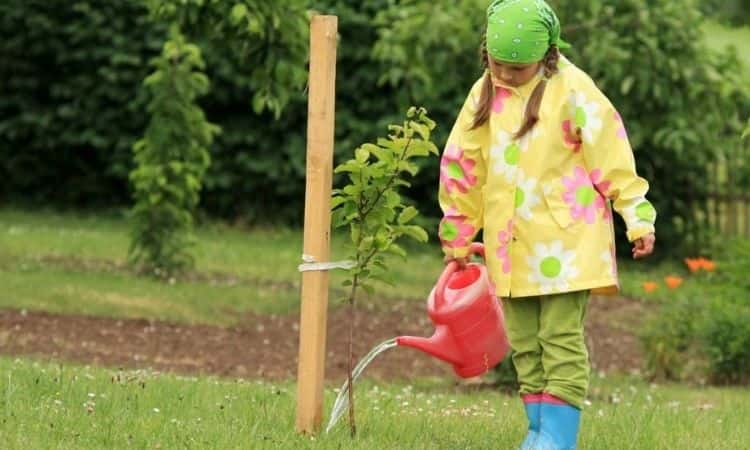
Water and fertilize the apple tree properly
After planting, you should water your apple tree regularly and sufficiently – even a year after planting, because younger trees, in particular, need additional watering in the event of prolonged drought. Older apple trees usually manage without additional watering.
By enriching the planting soil with compost, no further fertilization is required when planting the apple trees. The best time to fertilize is in spring, March, or April with suitable fruit plant fertilizer.
Cut the apple tree: The high art of apple tree pruning
The crowns of apple trees grow very densely. They have to be thinned out regularly, only then can a stable supporting structure be built up and a high yield is guaranteed. What you need to know when cutting apple trees is explained below.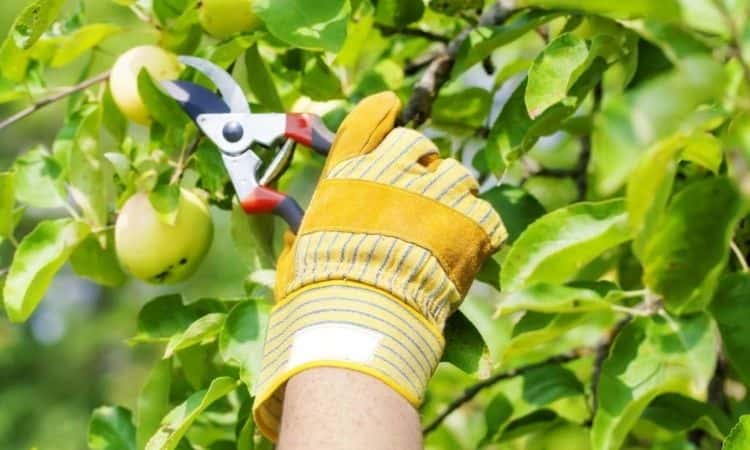
When to cut the apple tree?
The perfect time to cut an apple tree is either in winter (December to March) or summer. If the tree is to be stimulated by the pruning in growth and branching, winter pruning is particularly suitable. This gives an impulse for the budding of many buds in spring, from which new shoots develop.
Summer pruning, on the other hand, serves to slow down the growth of the tree and to lighten the crown considerably. The tree is robbed of energy with the softening mass of leaves and the shoots next year will be much more restrained. Regardless of when the apple tree is cut, you should make sure to cut your protégé only in dry weather. This way you can minimize the risk of fungal infections.
How to cut the apple tree?
In general, the following applies when cutting fruit trees: A strong pruning causes wood growth, strong new shoots, and crown formation. A weak pruning causes the crown to become denser and more fruitwood to grow. When cutting, do not leave any cut surfaces in a horizontal position.
Water can collect there in winter and cause the outer layer of the apple tree to crack. Cracks in bark and wood are a popular entry point for fungal and other damaging pathogens. Depending on the stage of development of the tree, different targets can be pursued by cutting.
Planting cut
- Shorten the crown of the tree one to two thirds.
- Leave three to four evenly distributed master drives on the main drive.
- In the case of autumn, planting waits until early spring with pruning.
- Cut spring plantings immediately.
- Educational cut.
- Goal: Forming the crown according to the function of the tree, avoiding undesirable developments.
- Promotes yield, vitality, and stability in young apple trees.
- Targeted cutting in winter, summer, and autumn.
- Remove branches with a narrow-angle to the branches.
- Leave branches with a stable bearing capacity for the fruit.
- Conservation cut.
- Objective: Preservation of the crown framework.
- Promotes yield, vitality, and stability in older apple trees.
- Remove water shoots.
- Cut back older fruitwood with many branches.
- You can find more information about cutting apple trees here.
